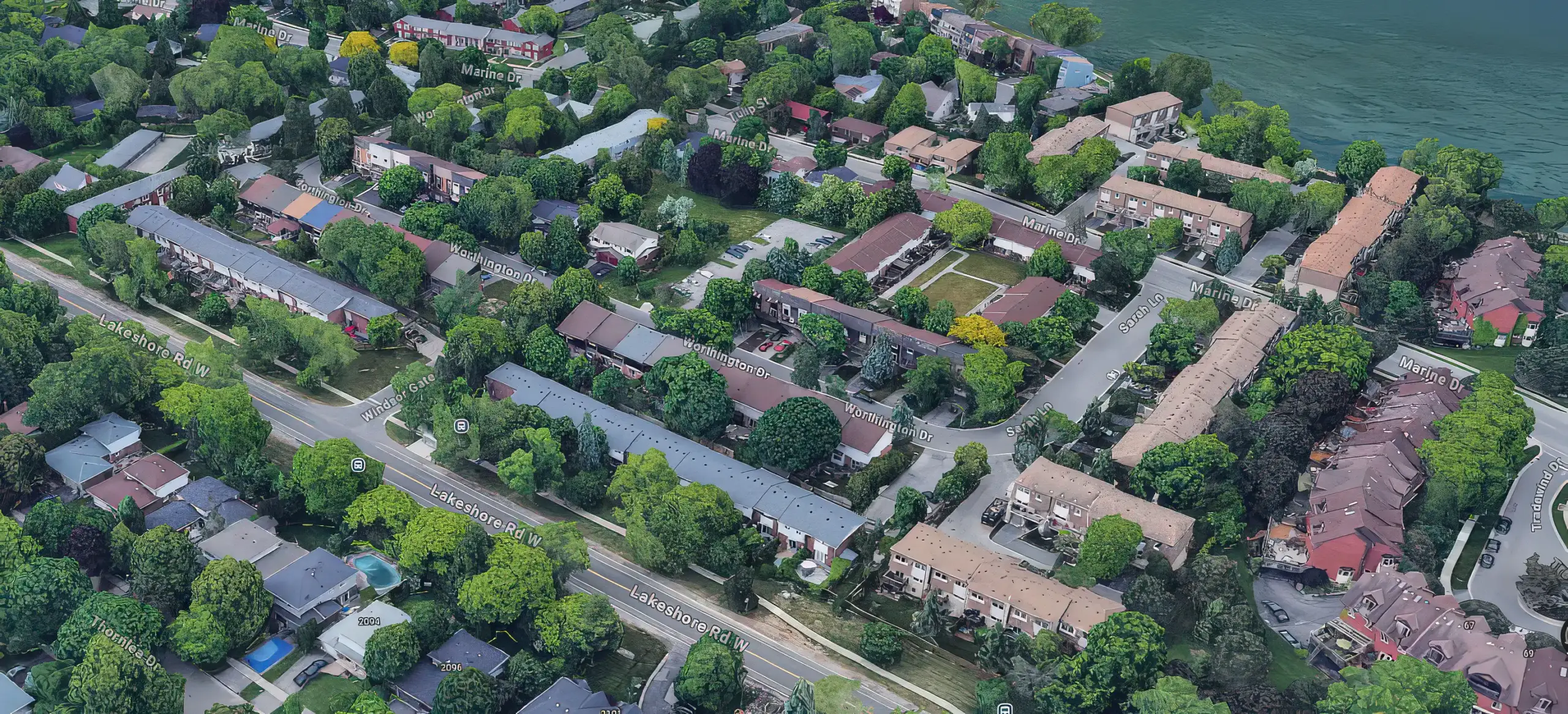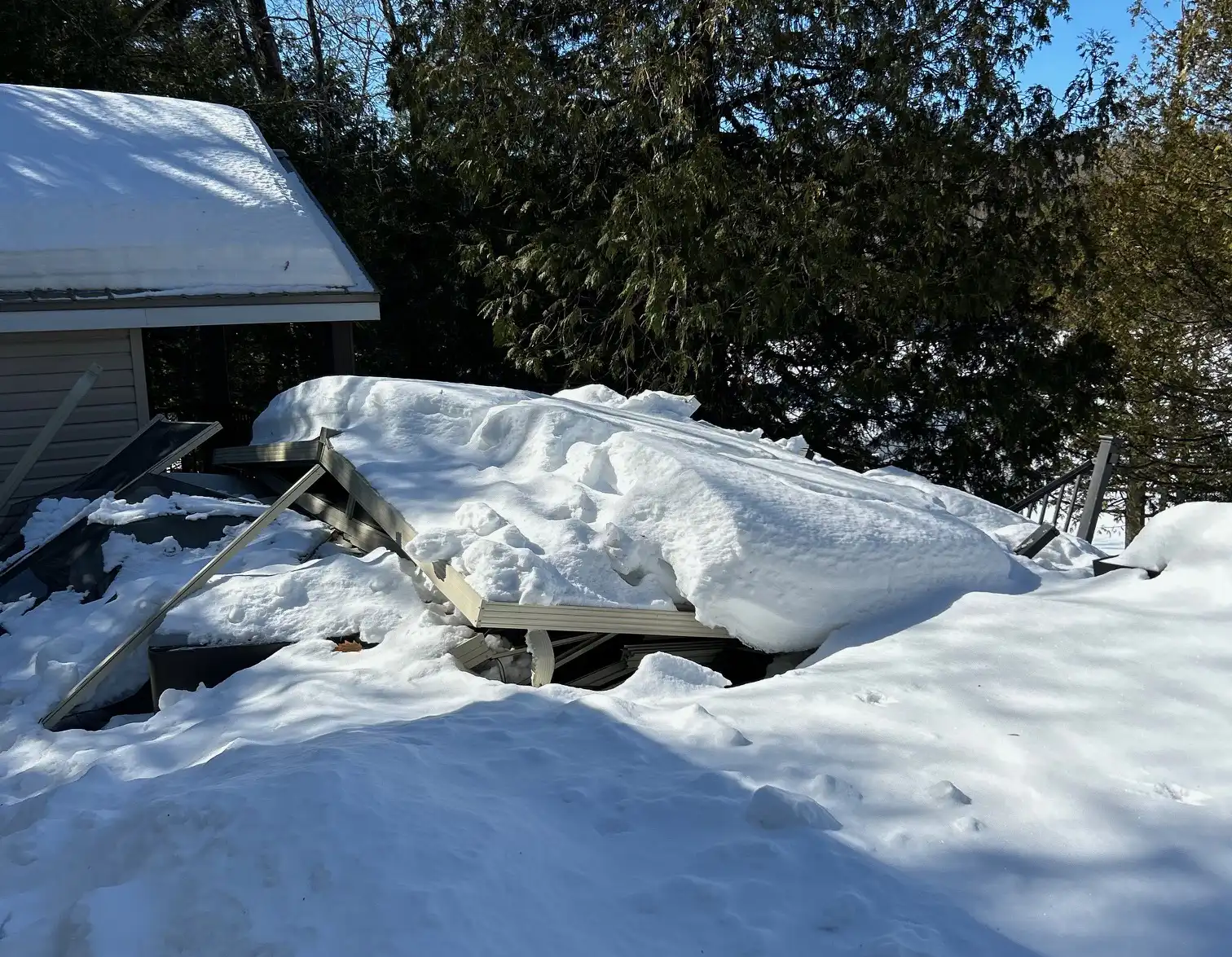The late March 2025 ice storm left a significant mark on Ontario Cottage Country, impacting homes and outdoor structures. For many cottage owners, assessing the aftermath includes dealing with potential damage to their beloved decks. The weight of ice and impact from falling debris can compromise the safety and integrity of these essential outdoor living spaces. Understanding how to assess this damage and navigate the necessary steps for repair or replacement is crucial for ensuring the longevity and safety of your cottage country decks.
Ontario Cottage Country experienced a severe ice storm over the weekend of March 29-30, 2025, characterized by prolonged freezing rain that coated the region in thick ice. Areas like Muskoka, Orillia, Peterborough, and the Kawartha Lakes faced widespread power outages, downed trees, and significant property damage. Many cottage owners returning to their properties are finding their decks impacted by fallen branches or the sheer weight of the ice accumulation, which reached up to 25 mm in some areas.
This guide, drawing on insights from The Deck Store’s extensive experience, provides essential information for assessing damage to your cottage country decks, understanding repair versus replacement options, navigating costs and regulations, and ensuring safety during the cleanup process.
Understanding Ice Storm Damage to Decks in Ontario Cottage Country
Wooden decks, common in cottage settings, are particularly vulnerable to ice storm damage due to the porous nature of wood and the stresses imposed by ice and impact.
Structural Damage
The immense weight of ice, combined with impacts from falling trees or branches, can cause significant structural issues for cottage country decks.
- Collapse Risk: Excessive load can lead to partial or complete deck collapse, especially on older structures or those not built to current building codes.
- Warping and Buckling: Moisture from melting ice causes wood to expand and contract, leading to bent, twisted, or lifted deck boards.
- Cracks and Splits: Stress from weight, impacts, and freeze-thaw cycles can cause cracks in deck boards, support beams, or joists, weakening the structure.
- Loose Fasteners: Shifting and stress can loosen or break nails and screws, compromising connections and stability.
Railing Damage
Deck railings are critical safety features and are also susceptible to ice storm damage.
- Breakage: Direct impacts or ice weight can break, crack, or splinter wood or metal railings.
- Looseness: Posts and connections can become loose or wobbly, failing to provide adequate support and increasing fall risks.
Surface Damage
The deck surface itself can suffer various forms of damage.
- Cracks and Splinters: Ice forming in the wood grain or impacts can cause surface cracks and splinters.
- Scratches and Gouges: Improper ice removal (e.g., using metal shovels) can damage the wood surface.
- Mold and Mildew: Prolonged moisture creates ideal conditions for mold and mildew growth, leading to discoloration and slippery surfaces.
- Staining: Trapped moisture or inappropriate de-icing products can stain or discolor the deck surface.
It’s important to note that composite and PVC decks are generally more resistant to moisture-related damage compared to traditional wood.
Assessing Deck Damage: Repair or Replace Your Cottage Country Deck?
A thorough damage assessment is the first step towards restoration. Safety should always be the priority during inspection.
Visual Inspection Steps
- Overall Check: Look for obvious signs like broken boards, collapsed sections, leaning railings, or debris accumulation.
- Board Examination: Inspect individual boards for cracks, splinters, warping, cupping, and discoloration. Pay attention to areas where water might pool.
- Railing Stability: Gently push and pull railings (top rail, balusters, posts) to check for looseness or wobbling. Inspect post bases for rot or damage.
- Substructure Check (If Accessible): Look underneath for sagging frames, settling posts, cracked beams/joists, or signs of moisture damage (discoloration, mold).
- Ledger Board Inspection: If attached to the cottage, examine the ledger board for damage, rot, or loose connections (gaps, water stains). Damage here is a serious structural concern.
Probing for Hidden Damage
- Check for Rot: Use a flathead screwdriver or awl to probe damp or discolored wood, especially support posts, beams, joists, and around fasteners. Soft, spongy spots indicate rot.
- Fastener Check: Look for loose, popped, rusted, or corroded nails, screws, and metal connectors.
Deciding Between Repair and Replacement
The decision hinges on the extent and nature of the damage:
Consider Repair If:
- Damage is localized (few boards, railing sections).
- The underlying support structure (beams, joists, posts) is sound.
- The deck is relatively new and well-maintained.
- Repair costs are significantly lower than replacement.
- Issues are primarily cosmetic (minor cracks, loose fasteners).
Consider Replacement If:
- Damage is widespread (numerous boards, railings, structural parts).
- There are significant structural issues (sagging, leaning posts, widespread rot).
- The deck is old and generally deteriorated.
- Safety is compromised (unstable railings, stairs).
- Repair costs approach or exceed replacement costs.
- There is significant termite or insect infestation damage.
- The ledger board has severe damage.
Consulting with experienced deck professionals, like the team at The Deck Store, can provide expert assessment and guidance on the best course of action for your specific situation.
Costs Associated with Deck Repair and Replacement in Ontario
Understanding potential costs is vital for planning. Prices vary based on materials, labor, and the extent of work.
New Deck Construction Costs (Estimates per sq. ft., incl. materials & labor)
| Material Type | Estimated Cost per Square Foot (CAD) | Notes |
| Pressure-Treated Pine | $50-$75 | Affordable, common, requires regular maintenance. |
| Cedar | $60-$80 | Natural wood, good durability, requires some maintenance. |
| Composite | $75-$90 | Higher upfront cost, very low maintenance, durable. |
| PVC | $80-$100 | Synthetic, highly moisture-resistant, low maintenance. |
| Fiberglass | $95-$125 | Durable, lightweight, good for specific applications. |
| Aluminum | $100-$150 | Durable, corrosion-resistant, long-lasting, pricier. |
| Exotic Hardwoods | $95-$150 | Unmatched durability & aesthetic, high cost. |
Note: Labor typically accounts for 40-50% of the total cost. Railings ($75-$175+/linear foot), features (benches, lighting), permits, design fees, and demolition of the old deck add to the overall expense.
Common Deck Repair Costs (Average Ranges)
| Decking Issue | Average Cost to Repair (CAD) |
| Railing Repairs | $500–$4,000 |
| Popped Nails/Screws | $0.30 per sq. ft. |
| Loose Stairs | $25–$50 per stair |
| Mold and Rot | $200–$500 |
| Mildew | $50–$110 |
| Board Replacement | $500–$4,000 |
| Termite/Pest Damage | $200–$600 |
| Resurfacing | $15–$50 per sq. ft. |
| Refurbishing | $100–$2,000+ |
| Stair Anchoring | $15–$40 per step |
| Pressure Washing | $200–$450 |
| Substructure Damage | $4 per sq. ft. |
Note: Costs depend on severity, area size, material type, and labor rates ($50-$100+/hour). Hidden damage can increase costs.
Always obtain detailed written quotes from qualified local contractors to get accurate pricing for your specific cottage country deck project. Consider long-term maintenance costs when choosing materials.
Navigating Building Codes and Permits for Cottage Country Decks
Compliance with the Ontario Building Code and local municipal regulations is crucial for safety and legality.
When is a Permit Needed?
Generally, a building permit is required for new decks if they:
- Exceed 600 mm (approx. 2 ft) in height above grade.
- Exceed 10 sq. meters (approx. 108 sq. ft) in area.
- Involve structural repairs or alterations (replacing beams, joists, posts, changing size/height).
Key Building Code Considerations
- Guardrails: Mandatory for decks 600 mm+ above grade (specific height/spacing rules apply).
- Foundations: Must typically extend 1.2 m (4 ft) below grade for frost protection (non-floating decks).
- Ledger Board Attachment: Critical connection to the house structure requires specific fasteners (lag bolts/through-bolts), not just nails.
- Materials: Often specifies pressure-treated wood for structural parts; may restrict certain materials (e.g., hollow plastic railings).
- Stairs: Must comply with riser height, tread depth, and handrail regulations.
Obtaining a Permit
- Contact your local municipal building department early.
- Submit an application with required documents (survey, construction drawings).
- Pay applicable fees.
- Schedule mandatory inspections during construction.
Working without necessary permits can lead to fines, stop-work orders, or demolition requirements. Always verify requirements with your specific township or municipality, as local rules may vary. The Deck Store’s team includes BCIN-certified designers who can assist with permit drawings and applications.
Safety First: Post-Storm Deck Assessment and Cleanup Tips
Prioritize safety when returning to your cottage property after the ice storm.
- Beware of Hazards: Be cautious of unstable trees, branches, and downed power lines. Never approach lines; contact utility providers.
- Professional Tree Help: Use certified arborists for damaged trees near structures or power lines.
- Use PPE: Wear hard hats, safety glasses, gloves, and sturdy boots during inspection and cleanup.
- Don’t Work Alone: Have someone with you when assessing potentially unstable structures.
- Insurance: Contact your insurance provider promptly to report damage and understand coverage. Document everything with photos/videos and keep records of expenses.
FAQ
What are the most common types of ice storm damage to cottage country decks?
- Common damage includes structural issues like cracked or warped boards and beams from ice weight or impacts, broken or loose railings, and surface damage like splinters, mold growth, or staining from prolonged moisture exposure.
How can I tell if my deck needs minor repairs or a full replacement after the storm?
- Repair might be suitable if damage is localized, the structure is sound, and the deck is relatively new. Replacement is often necessary for widespread damage, significant structural problems (sagging, rot), extensive deterioration on an old deck, or if repair costs are very high. A thorough inspection, including probing for rot, is key.
Do I need a building permit to repair my ice-damaged deck in Ontario Cottage Country?
- A permit is often required for structural repairs (replacing beams, posts, joists) or if you alter the deck’s size or height. It’s always best to check with your local municipal building department to confirm requirements for your specific repair project.
What are the main factors affecting the cost of repairing or replacing my deck?
- Costs depend on the extent of damage, the size of the deck, the type of materials chosen (wood vs. composite/PVC), labor rates in your area, and any additional features like railings, stairs, or lighting. Demolishing an old deck also adds to replacement costs.
Conclusion
The aftermath of the March 2025 ice storm presents challenges for owners of cottage country decks. By prioritizing safety, conducting thorough damage assessments, and understanding the options for repair versus replacement, you can make informed decisions. Navigating the costs, building codes, and permit requirements with diligence, potentially with guidance from experienced professionals like The Deck Store, ensures your deck is restored safely and effectively. Addressing the damage promptly and correctly will help you return to enjoying your cherished outdoor living space in Ontario Cottage Country for years to come.
For expert assessment, design, and construction services for your cottage country decks, contact The Deck Store for professional advice and assistance.



